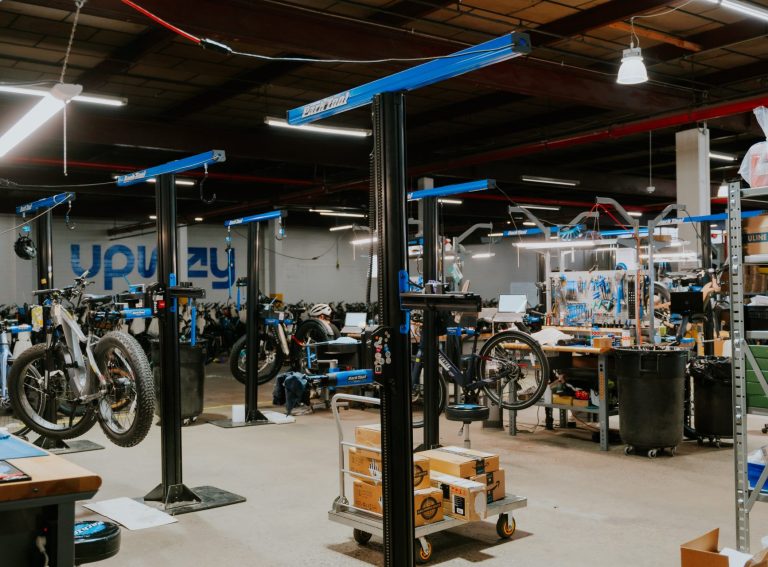Since introducing the USA’s first bike share scheme 15 years ago, Washington, D.C. has become a shining example of how micromobility is done right.
The nation’s capital is home to a mixed fleet of over 18,000 vehicles from standing scooters to pedal-assist e-bikes and throttle-assist e-bikes.
Veo launched in D.C. in 2023 and has already quickly grown its fleet to nearly 3,000 shared scooters and e-bikes. The city now represents a “flagship” market for Veo because, it says, the District Department of Transportation (DDOT) is so transparent and easy to engage with.
“DDOT is in a league of its own with respect to how they implement micromobility policy,” Jeff Hoover, Veo’s Director of Government Partnerships, tells Zag Daily.
“We have built out a robust local program and as a result a lot of the Veo team is devoted to our D.C. operation.”
As is evidenced by its year-long study into accessible vehicle design, Veo is committed to making micromobility as inclusive and enjoyable as possible and Hoover has been impressed with the commitment that D.C. policy makers have shown to pursuing this goal.
“Whether it’s increasing the number of accessible devices or including parts of the community that have previously been left out of the conversation, there are so many opportunities and different angles with which we can work with DDOT,” he says.
Clear metrics for fleet expansions
Founded in 2017, Veo has expanded across the US over the past seven years and now has a presence in 50 markets – ranging from major urban areas such as New York and Los Angeles to smaller cities and university towns.
In this time Hoover and his colleagues have gained valuable insight into how successful micromobility tender processes should work, and are aware of the issues that still persist. In the UK and Europe for example, operators have blamed rigid KPIs and punitive costs implemented by cities for limiting the success of shared micromobility schemes, whereas DDOT is focused on making it possible for companies like Veo to operate long term.
According to Ride Report data, Veo accounted for close to 24% of the almost 1.6m e-bike rides completed in D.C. during 2023, despite only soft launching its service in February of that year. Fast forward to Q1 of 2024 – Veo recorded a 368% year-on-year increase in trip numbers and was responsible for 28% of total rides in D.C. This is a substantial increase given that citywide journey numbers increased by 75% during the same period.
“DDOT has very clear, easy to understand metrics that inform operators about what they must achieve in order to grow their fleet,” Hoover explains.
“So even with competition from other operators, we have been able to scale our e-bike fleet by a factor of three in just over a year.”
D.C. bike operators need to achieve a rolling 30-day average of one ride per bike per day before expanding their fleet, in addition to deploying no less than 75% of their fleet capacity during high season months.
“These objective thresholds make future planning and financial projections far easier and more accurate,” Hoover argues.
“We have a crystal clear understanding of what success looks like. So far in 2024 we are at one ride per bike per day despite increasing our fleet size, which we were able to scale as a result of meeting that target at four previous intervals.”

Free rides for those in need
Another aspect of the D.C. micromobility ecosystem that has impressed Hoover is DDOT’s “extremely thoughtful approach” to providing lower income residents with access to new mobility options.
“The city has gone far beyond the standard of offering discounted rides to lower income communities,” he continues.
“DDOT requires each operator to provide unlimited, free 30-minute rides to people who qualify for the programme, which is very much outside the norm. This is a great scheme as lower income communities often have the worst access to transport.”
As part of the scheme, the city will refund part of the permit fee paid by operators depending on the proportion of miles traveled by people that qualify for the Veo Access Scheme.
The system has certainly had success since Veo launched in D.C., with 53,000 Veo Access rides completed at the last count.
“The city is quite literally putting its money where its mouth is and if companies like Veo can demonstrate utilisation of the low income programme, they refund substantial amounts,” Hoover says.
“Around 60% of our e-bike fees were rebated during the second six-month interval of our time in DC. That is truly unique in North America.”
When Veo launched its Cosmo-E e-bike in D.C., it was the first Class II device to be introduced to the city’s micromobility fleet, adding to its collection of e-scooters, bikes and Class I e-bikes.
“Mixed fleets are foundational to Veo and we believe the Cosmo-E really adds to the tapestry of the D.C. micromobility scene,” says Hoover.
“Class II, throttle-assist bikes that offer the ability for users to sit down and not need to be peddled also open up micromobility to a wider group of people that have previously been left behind by the industry.”
D.C. further requires all devices to be fitted with a lock and for riders to lock it at the end of each journey, which Hoover says is a policy that Veo would not usually support.
“However, this requirement was supported with money from the city council which enabled DDOT to install the locks and racks,” he adds.





